Gun Tests readers have been asking us for more revolver testing, so we’ve been looking for new and improved versions of wheelguns to load up and shoot. We recently found a trio of snubnosed handguns that promise power and, perhaps, easier carry that readers might enjoy and perhaps invest in. The first is a collaboration between Lipsey’s and Smith & Wesson — the Model 442 Ultimate Carry, a blued 38 Special version of the current hammerless Airweight model. Lipsey’s is the exclusive distributor, and the current counter price seems to be right at $759, which is MSRP. We also tested another S&W product, the current Model 642 Airweight 103810 in 38 Special, $519. Rated for +P loads, this version also uses an aluminum frame but with stainless steel for the barrel and cylinder to handle the higher pressures of +P cartridges. Stepping up another power level, we got a new Colt King Cobra Carry with the 2-inch barrel, a bright stainless finish, a double-action-only trigger, and rated for 357 Magnum. The KCOBRA-SB2BB model is widely retailing for $949.
Ammo selection was all 38 Special to accommodate the two Smiths, which can’t handle 357 Magnum rounds like the Colt. The 38s included the recently introduced G2R Telos 105-grain monometal load, along with 110-grain Federal Hydra-Shoks, Sellier & Bellot 148-grain wadcutter rounds, and Magtech 158-grain lead roundnose loads to top it all off. Given their operation and the intended use of these revolvers, we fired multiple five-shot groups double action only at 5 yards. We shot the speed drills from low ready with one, two, and three timed rounds at 5 yards, trying to keep all our shots inside the “A zone” of a USPSA cardboard target.
Smith & Wesson Model 642 Airweight 103810 38 Special
$519
Gun Tests grade: B [BEST BUY]
Even with a 12-pound trigger and fixed sights, this little revolver still shot very well. If you are looking for a small and reliable pocket pistol at the best price, grab the base Model 642 Airweight and hide it wherever you like it.
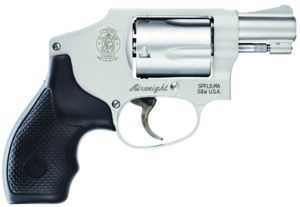
| Action Type | Revolver, double action only |
| Overall Length | 6.4 in. |
| Overall Height | 4.2 in. |
| Maximum Width | 1.31 in. |
| Weight Unloaded | 0.91 lbs. |
| Weight Loaded | 1.07 lbs. |
| Barrel Length | 1.875 in. |
| Barrel & Cylinder Material | Satin stainless steel |
| Frame Material | Satin aluminum alloy |
| Cylinder Material | Satin stainless steel |
| Grip Front Strap Height | 1.5 in. |
| Grip Back Strap Height | 3.6 in. |
| Grip Thickness (Maximum) | 1.125 in. |
| Grip Circumference | 4.5 in. |
| Capacity | 5 |
| Rear Sight | Fixed groove |
| Front Sight | Fixed ramp |
| Sight Radius | 3.5 in. |
| Trigger Pull Weight | 11.78 lbs. |
| Trigger Span | 2.9 in. |
| Safety | None |
| Warranty | Limited |
| Telephone | (800) 331-0852 |
| Website | Smith-Wesson.com |
| Made In | U.S. |
We currently reside in a firearms universe where the prevailing opinion is that “more is better,” perhaps with very good reason. We have to confess that we have never heard anyone who has survived an actual encounter requiring the use of a firearm to state that they wish they had had a smaller gun or less ammo.
We have also heard experienced professionals opine that shot number 17 in the magazine is not anywhere near as important as the first two out of the muzzle. Modern concealment-sized Wonder Nines do indeed bring a decent bag of bullets to the fight, but, by the nature of the beast, are more prone to malfunction as a consequence of heavy springs, lightweight slides, dirt and liquids on the pistol, or a bad grip wrapped around it. Can these malfunctions be cleared? Of course, if the shooter has enough time. Just as an exercise, check with law-enforcement officers and see how many choose a small revolver for their backup gun that absolutely, positively has to go bang on the first try.
Smith & Wesson and Colt Manufacturing ruled the LEO market with their revolvers for three quarters of a century. Both recognized the value of a smaller version of their duty guns as a backup. Introduced in 1950 (and approved by the International Association of the Chiefs of Police), the small 38 Special revolver that came to be the Model 36 in S&W nomenclature was nicknamed the Chief’s Special. Colt introduced its Cobra model about the same time but designed the Colt revolver to carry six rounds versus the Smith’s five-shot capacity. Further development with the short-barreled (snub-nosed) concept has continued with the preponderance of sales now coming from lightweight hammerless (or concealed hammer) versions. Short tubes abound with 17⁄8-inch to 3-inch barrels being most popular. One of the early entrants from S&W was the Airweight Centennial version that came to be known as the Model 42 when numbers were assigned in 1957. As the numbering system evolved, “4” prefix model numbers designated a blued finish and, normally, carbon-steel components, while the “6” prefix was used for stainless steel. The Model 42 was renamed the Model 442 or 642 to denote the different metals used in construction. Both used aluminum for the frame. Both have 17⁄8-inch barrels and both sport the humpback look where the frame encloses the hammer. Since you obviously can’t cock them, they are double action only. Go talk to your attorneys and instructors but, for us, that is just fine. For a variety of legal and liability reasons, instructors we respect don’t teach or practice the thumb cocking of revolvers for defensive situations.
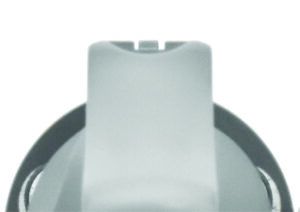
The current Model 642 is already the product of a great deal of design evolution from the first S&W snubbies. One of our testers owns a “No Dash” Model 60 — the early stainless-steel version of the original Model 36. No longer offering the recessed chambers, it still has a pinned barrel. That may look cool on an old pistol (and quickly identifies it as same), but the extra step (and cost) has proven to be unnecessary. Small and easy to carry, it has its own shortcomings. The chamber mouths and the leading edge of the cylinder are square and sharp. The small, thin grip panels ensure that middle fingers get smacked by the trigger guard on firing. Pocket carry with our DeSantis Nemesis holster, or the DeSantis ankle holster, can be fouled during the draw by the fully exposed hammer. One of our solutions has been to carry our small wheelguns in a Galco belt holster that can be used strong side or cross draw. Sights are minimal, but still effective at shorter ranges.
The current Model 642 fixes many of our complaints. S&W has gone to chamfered chamber mouths and a beveled cylinder to make its revolvers easier to load and holster. The new synthetic grips extend to the front and the bottom of the frame, protecting the middle finger under recoil. The palm swell makes them easier to hold on to, and the length is the same. This is a much easier revolver to draw from a concealed space. Sights are essentially the same, with a groove milled into the top strap and a serrated ramp for the front blade. The finish on the aluminum frame is a matte silver, which also means that the top strap produces much less glare to interfere with the sight picture. The cylinder release is an improved version, allowing a bit more purchase for the thumb. We were pleased to note that our Model 642 did not have the keyed lock built in.
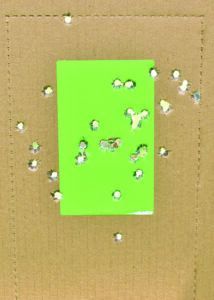
Trigger pull is one of the weak points of the S&W system, in our opinion. We measured 10 pulls with a Lyman digital trigger gauge on our vintage Model 60, which gave us an average required compression of 11.7 pounds The brand-new Model 642 required 11.78 pounds in the same test. We understand liability concerns for agencies and people in defensive situations, but we think close to 12 pounds is excessive. We also understand that there are limits to what mechanics and leverage can do with these trigger pulls. In most cases, the spring that resists trigger movement is also the spring that makes sure the hammer strikes with enough force to set off the primer. Get that spring too light and your marvelously reliable revolver turns into a boat anchor. Luckily, we have found that S&W pistols respond very well to the ministrations of an experienced gunsmith. Knowledge and proper polishing can smooth out the trigger pull on a good Smith, leaving even avowed trigger snobs with a smile.
Trying to be consistent with the intended use of these small handguns, shooting was done double action only (none of the revolvers offer a single- action option) at the close range of 5 yards. We weren’t surprised that all three handguns functioned perfectly. Accuracy, on the other hand, did indeed surprise us — in how good it was. The 642 Averaged 1.011 inches for five-shot groups using four different kinds and weights of ammo. The Federal Hydra-Shok averaged under 0.8 inch and the 148-grain wadcutters had two groups under 0.7 inches. The speed drills consisted of one, two, and three-shot strings as fast as we could pull the DAO trigger and still hit something. The 642 kept all the shots in the A Zone of a USPSA target with a group diameter of 5.8 inch. Recoil, shall we say, was a bit brisk.
Our Team Said: We’re very comfortable recommending the 642 Airweight as a daily carry gun. It’s dependable, accurate, and portable. For the dollar, we think it’s a Best Buy.
| 38 SPECIAL RANGE DATA | |||
| G2 Research Telos 105-grain HP | S&W Model 642 | S&W Model 442 UC | Colt King Cobra Carry |
| Average Velocity | 1016 fps | 1015 fps | 1059 fps |
| Muzzle Energy | 241 ft.-lbs. | 240 ft.-lbs. | 261 ft.-lbs. |
| Best Group | 0.751 in. | 0.82 in. | 0.82 in. |
| Average Group | 1.06 in. | 0.86 in. | 0.93 in. |
| Federal Hydra-Shok 110-grain JHP | S&W Model 642 | S&W Model 442 UC | Colt King Cobra Carry |
| Average Velocity | 878 fps | 855 fps | 909 fps |
| Muzzle Energy | 188 ft.-lbs. | 179 ft.-lbs. | 202 ft.-lbs. |
| Best Group | 0.71 in. | 0.85 in. | 0.46 in. |
| Average Group | 0.78 in. | 0.92 in. | 0.66 in. |
| Sellier & Bellot 148-grain Wadcutter | S&W Model 642 | S&W Model 442 UC | Colt King Cobra Carry |
| Average Velocity | 635 fps | 627 fps | 606 fps |
| Muzzle Energy | 132 ft.-lbs. | 129 ft.-lbs. | 121 ft.-lbs. |
| Best Group | 0.67 in. | 0.95 in. | 0.44 in. |
| Average Group | 0.85 in. | 1.06 in. | 0.54 in. |
| Magtech 158-grain LRN | S&W Model 642 | S&W Model 442 UC | Colt King Cobra Carry |
| Average Velocity | 690 fps | 675 fps | 701 fps |
| Muzzle Energy | 167 ft.-lbs. | 160 ft.-lbs. | 173 ft.-lbs. |
| Best Group | 1.23 in. | 1.08 in. | 0.43 in. |
| Average Group | 1.36 in. | 1.21 in. | 0.64 in. |
We fired these revolvers side by side at American Shooting Centers in west Houston. We used a LabRadar chronograph (MyLabRadar.com, $559) to determine muzzle velocities. We used a well-sandbagged Caldwell Pistol Rest from MidwayUSA and a mini-DRC Fortune Cookie bag from Wiebad.com to shoot five-shot groups shot at 5 yards. The Telos is a solid-copper hollow point. JHP = jacketed hollow point. LRN = lead round nose.
| DRILL NO. 1 DATA | |
| Pistol | Single Shot Average Time |
| S&W Model 642 | 1.06 |
| S&W Model 442 UC | 0.93 |
| Colt King Cobra | 0.89 |
Process: Fire one shot from low ready at 5-by-11-inch A Zone target placed at 5 yards. Times in seconds are averages for 10 repetitions.
| DRILL NO. 2 DATA | |||
| Pistol | 1st Shot | Split Average | Total Time |
| S&W Model 642 | 0.97 | 0.43 | 1.4 |
| S&W Model 442 UC | 0.95 | 0.38 | 1.33 |
| Colt King Cobra | 0.887 | 0.333 | 1.22 |
Process: Fire two shots from low ready at 5-by-11-inch A Zone target placed at 5 yards. Times in seconds are averages for three repetitions.
| DRILL NO. 3 DATA | |||
| Pistol | 1st Shot | Split Average | Total Time |
| S&W Model 642 | 0.79 | 0.393 | 1.71 |
| S&W Model 442 UC | 0.917 | 0.348 | 1.61 |
| Colt King Cobra | 0.923 | 0.323 | 1.57 |
Process: Fire three shots from low ready at 5-by-11-inch A Zone target placed at 5 yards. Times in seconds are averages for three repetitions. Elapsed times for all drills were determined using a CED7000 shot timer.
Written and photographed by Joe Woolley, using evaluations from Gun Tests Team members. GT


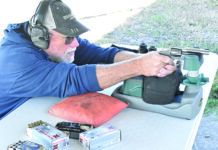
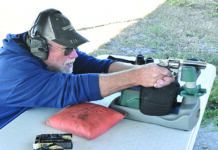
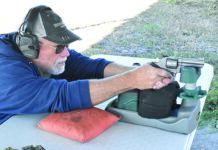
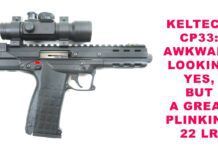
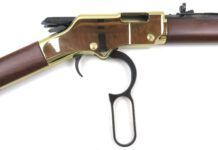
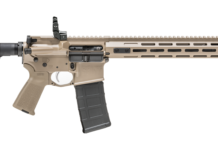
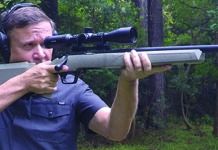
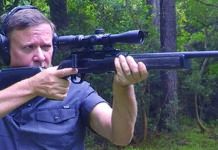


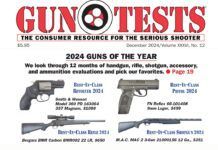


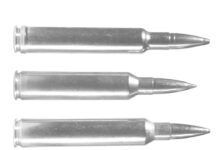
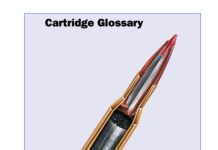
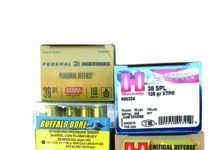
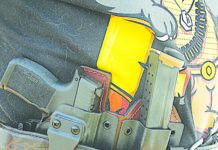
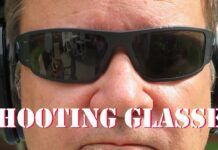

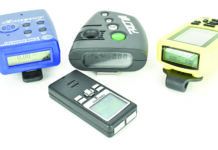



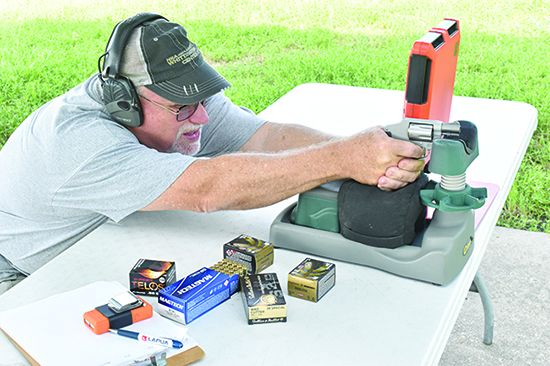

Great review and i guess the B rating is ok. I have a hammerless S&W 38 that i carried for backup when i was working. I carried it in a pocket, as I could shoot through the pocket if needed (never needed to do this, but it was a comforting thought),
For its intended purpose for myself, however, I would rate it A+.
Good work on this article, Thank You. I started in the shooting sports thanks to the old NRA and local sports club that got us into shooting at age 12, and being 73 now I have enjoyed many areas of shooting. I picked up a Ruger Single Six about 58 years ago and that started a lot of fun with handguns, as well as the serious side of CC. CC is SD was by pay to play starting in about 1970 of so, and of course Open Carry has always been legal is SD. I got my CC that first year they came out, and now SD has permitless CC, but only for some of us. I still pay to play as our SD CC permit is recognized in about 20 other states. I started with revolvers, played with semi autos and maybe 30 years back I moved into mainly small CC SA, and I like the 40S&W so that and other calabers have been my Daily CC. Well they were until about 10 years ago when I switched mainly to Snubs, and I like a light 357 load so I only have to hit em once to put the down. No, I have never had to shoot at a human and I hope I don’t have to, but I carry Always just because. I will leave my CC in my auto if I am entering a No Gun Zone, but most of those are Government Offices and I avoid those places.
Anyway, you did a good job reviewing these. Thank You
great tests. wish you would compare Taurus snubbies, too. mine are reliable and somewhat more compact, and affordable. I load my .38 (6 shot) with high velocity wadcutters (1000fps).
A Taurus snubby revolver test would be great, more affordable for us.